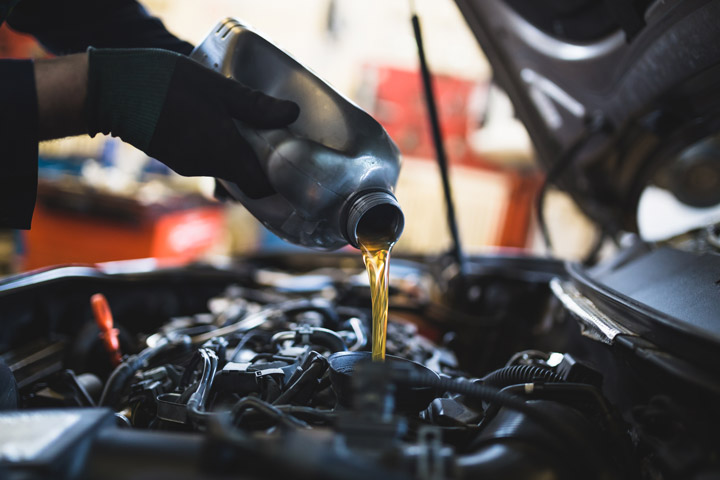Featured
2 of the most vital tire solutions are tire turning and positioning. If you're unfamiliar with what tire rotation and positioning require, here's an in-depth appearance at why they matter and exactly how they profit your vehicle.
What Is Tire Turning? Tire turning refers to relocating your tires from one setting to one more to ensure they use equally. The reason tire rotation is necessary is due to the fact that not all tires wear the exact same method.
By revolving your tires routinely, you can cancel the wear throughout all four tires. This helps them last much longer and enables for more also traction, boosting handling and stability. A lot of manufacturers advise turning your tires every 6,000 to 8,000 miles or according to the car's handbook.
What Is Tire Alignment? Tire alignment, likewise called wheel placement, describes the process of changing the angles of your cars and truck's wheels to satisfy the producer's requirements. The objective of placement is to guarantee that all four tires are pointing in the appropriate instructions and at the right angles, which enables ideal handling, safety, and tire life.
There are three primary positioning angles that are adjusted during an alignment check:

Camber: The tilt of the wheels when checked out from the front. If the camber is off, it can lead to unequal tire wear, as the tire will certainly not make full call with the roadway surface area. Caster: The angle of the guiding axis when watched from the side. Correct wheel placement ensures that your vehicle is secure when driving straight which your wheel go back to its normal setting after a turn. Toe: The angle at which the tires point internal or exterior when watched from above. Inaccurate toe placement can trigger the tires to drag, causing irregular wear and decreased gas performance. Imbalance can occur over time because of normal driving or from hitting barriers like aesthetics or craters. If your alignment is off, it is essential to get it examined and corrected to prevent issues down the road.
Why Tire Turning and Positioning Matter. Boosted Tire Life:. Regular tire turning ensures even tire wear, helping you get the most gas mileage out of your tires. Irregular wear can trigger you to change tires too soon, which can be pricey. When your tires put on uniformly, they last much longer, conserving you cash in the lengthy term.
Enhanced Automobile Handling:. Proper alignment keeps your automobile driving straight and stable, especially at higher rates. Imbalance can trigger your vehicle to draw away, making it tougher to steer. By keeping your tires straightened, you guarantee your car handles extra smoothly and predictably.
Enhanced Security:. Tires that are not revolved or lined up effectively can use unevenly, impacting just how well your vehicle stops and edges. Misaligned tires or tires with irregular wear patterns may create decreased grip, particularly in damp or icy conditions, leading to a higher risk of crashes.
Much Better Fuel Efficiency:. Tires that are misaligned can produce rolling resistance, indicating your engine has to work more challenging to relocate the automobile. This raises fuel usage and reduces your vehicle's gas effectiveness. Correct tire positioning decreases rolling resistance, which can improve gas mileage.
Indications Your Tires Need Rotation or Alignment. While it's important to remain on top of routine tire rotations and placements, there are a few signs that may indicate your tires require interest:
Unequal Put On: If you discover that a person tire is more worn than the others, it's most likely time for a rotation. Guiding Pull: If your automobile pulls to one side or feels off-center, it can be an indicator of imbalance. Resonances: If you feel vibrations in the steering wheel or the vehicle, maybe due to a positioning issue. Noisy Tires: Screeching or loud tires could show incorrect turning or misalignment. If you see any one of these indications, it is very important to obtain your tires checked by an expert.
Exactly How Frequently Should You Revolve and Align Your Tires? Tire turning should usually be done every 6,000 to 8,000 miles, though this can vary based on your driving problems and the type of car you drive. It's likewise an excellent concept to have your tires revolved whenever you obtain an oil adjustment.
For alignment, you should have your tires lined up every 1-2 years, or a lot more regularly if you notice any kind of problems with taking care of or irregular tire wear. If you hit a huge split or curb, it's wise to obtain a placement examine today.
Final Thought: Normal Maintenance for Optimal Performance. Tire turning and alignment are two straightforward yet important solutions that maintain your cars and truck running efficiently, efficiently, and securely. By rotating your tires consistently and keeping your wheels correctly straightened, you can prolong the life of your tires, boost handling, and take pleasure in far better gas effectiveness.
Latest Posts
Trusted Vehicle Maintenance at Montclare Auto Repair - Fix Your Car Now!
Contact Us: Reach Out for Expert Auto Solutions & Repairs in Montclare
Why Choose Vinyl Fencing for Your Home?
